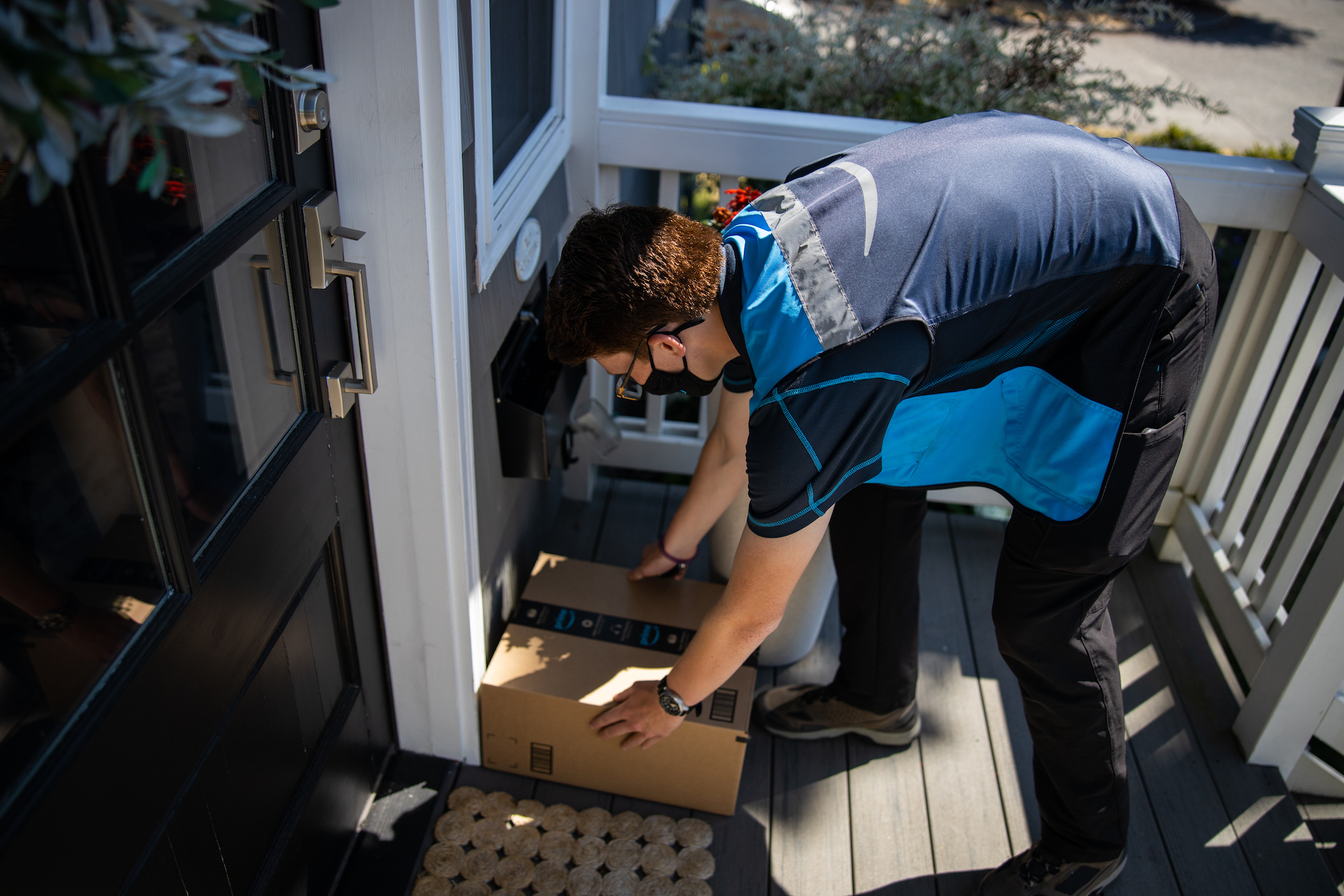Automation is a large part of Amazon’s success. At the gigantic retailer’s also gigantic distribution centers, robots trundle around ferrying goods from one place to another, the same goods that you can order online with a couple of taps of your smartphone without having to speak a word to anyone.
And Amazon uses algorithms to manage the millions of third-party sellers trading in its marketplace, relying on bots to decide if they should be removed from the platform if they’re selling counterfeit goods, inflating prices, or doing something else that the software thinks spoils the customer user experience.
After ‘Big Brother’, now come the Bots
Now, following news earlier this year that Amazon is introducing cameras in its vans to track the company’s regular drivers, and informing their supervisors if a computer thinks they’re not paying attention or using their phone, it transpires that the rule of bot extends to the management of some of the thousands of other Amazon drivers who deliver those packages to our doors using their own vehicles.
And the algorithm’s brutal lack of compassion, and lack of awareness of the complications of delivering packages in the real world, many of which are beyond the drivers’ control, means many are losing their jobs.
Bloomberg spoke to several former Amazon Flex gig workers, the delivery drivers who pick up packages that don’t make it onto delivery vans, who explained how their performance is assessed throughout the day by computer software. Depending on individual ratings for punctuality and feedback about whether a package was left where customer requested, each driver’s over performance is rated as either Fantastic, Great, Fair or At Risk.
Fired by a bot
Drop to At Risk, which some of Bloomberg’s interviewees said was very easy to do for something as simple as getting a flat tire, finding a storage locker broken, or being unable to access an apartment block because the gates were locked, and you might get an automated email informing you that your services are no longer required. Yep, fired by bot.
Having dabbled a little with Facebook marketing, where you can have your entire advertising account shut down for violating some rule or another, without ever being told exactly which bit of your advert triggered the shutdown, this sounds depressingly familiar.

You can appeal, but as with Facebook, the initial responses from Amazon are very likely to be from bots, despite a human-sounding name being listed at the bottom of the reply. And because there’s no paid leave during the appeal process, and because it costs $200 just to take the case to arbitration, most drivers are too busy looking for alternative work to pay bills (or simply too poor) to take it that far.
Amazon is often painted as the totem for evil capitalism, but I suspect the reality is it’s only pioneering technology that will become commonplace in other companies and other industries before long, if it hasn’t already.
Coming to a car near you?
And it makes us wonder about how the technology might be adapted in future in a way that might affect regular drivers. I suppose, in a way, it already has, and has done for years. The UK got its first fixed, unmanned speed camera in 1992, and now the country is covered with them.
Via Giphy
Unlike a real human traffic officer, those cameras have no idea or interest whether surrounding traffic was busy or non existent, or whether the road was like a sheet of ice with the coefficient of a PAM-coated Teflon frying pan, or grippier than a half-chewed toffee because it snapped you in 90 degree heat. All it knows is that 70 mph is fine, and 71 is not, when in fact, depending on the conditions, 80 mph might be safer on one day the 50 mph is the next in the same spot.
But looking further ahead, it’s not difficult to imagine us being forced to ‘log in’ every time we drive our own cars (out of interest, Mercedes makes us do this on press launches to keep track of who was driving what car and when). Fail to slow down for that 40 mph zone in time 10 years from now and your car’s GPS data could trigger a speeding fine – and an unwelcome notification on your phone informing you you’ve just had a chunk of money deducted from your bank account, and a load of points added to your license.
It could work for parking fines too. You know, those times when you quickly ditch the car where you shouldn’t, but you’re only going to be a second. The computer won’t know or care if it was because you were helping your elderly aunt who can’t walk far. Or consider noise and emissions infractions. Pass a roadside sensor, kicking out too much of either, and you’d get the dreaded ‘Ping!’ on your phone.
Then again, if any of this does happen, it’ll only be for a brief period. Because some new cars already automatically slow you down for corners, and as soon as cars become fully autonomous, you won’t be able to do anything bad. So we say enjoy speeding, overtaking, parking where you shouldn’t and making a right old racket with your 3-inch exhaust while you can.






